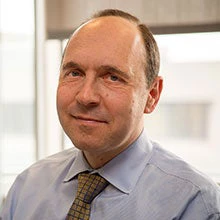When Jane Goodall spoke Tuesday at the World Bank, she said she had recently begun to understand the exciting potential value of REDD – reducing emissions from deforestation and forest degradation. For decades, Dr. Goodall and others have been fighting for the conservation of forests to preserve and protect animal habitat– in the case of Dr. Goodall, that of chimpanzees in Tanzania. And now, many people like Jane Goodall are making the connection between this battle and the fight against climate change.
By granting greater value to trees that are alive and standing rather than cut down, and making payments to reduce emissions by preserving forests, not only does the climate benefit but biodiversity is also protected, including species that are under the threat of extinction.
In her talk to staff, Dr. Goodall spoke about her shock when she discovered the extent of deforestation surrounding the national park in Tanzania in which her famous study of chimpanzees has taken place over the past 50 years.“It was in early 1990 that I flew over the Gombe National Park – it’s tiny, it’s only 30 square miles, but we flew over all the land around it and it was absolutely horrifying to me to see that, yes, I knew there was deforestation outside the park but I had not realized it was total deforestation“, said Dr. Goodall .
REDD provides a new opportunity to scale up initiatives like those of Jane Goodall to the national level, raises the profile of conservation work, and potentially creates new sources of funding for forest protection. But REDD also has a lot to gain from Dr. Goodall’s experience and wisdom. She is arguably the greatest ambassador for wildlife and forest conversation in the world today. Now she squeezes the annual UN conferences into her astounding, 300-day-a-year travel schedule. Anywhere she goes, she greets audiences with the call of the chimpanzee, and proceeds to make a compelling case about what REDD could be on the ground – forest protection, stewardship of flagship species, but also socio-economic development (the Jane Goodall Institute funds myriad projects aimed at improving communities’ well-being).
 The social dimension of REDD is critical. REDD is not designed to solve poverty, but unless it contributes to poverty reduction and sustainable development, it will not succeed. REDD allows countries to receive performance-based payments for reducing deforestation. The payments may go to the national government as well as to indigenous custodians of the forest. Dr. Goodall explained how she became aware that the people who live in and off the forests often have priorities other than protecting wildlife. They are concerned with their own survival – issues such as health, education and access to food. She said, working with local people around Gombe highlighted for her the connection between thriving forests, wildlife and the people’s quality of life. As people’s basic needs are addressed, they are also in a better position to preserve biodiversity, she said.
The social dimension of REDD is critical. REDD is not designed to solve poverty, but unless it contributes to poverty reduction and sustainable development, it will not succeed. REDD allows countries to receive performance-based payments for reducing deforestation. The payments may go to the national government as well as to indigenous custodians of the forest. Dr. Goodall explained how she became aware that the people who live in and off the forests often have priorities other than protecting wildlife. They are concerned with their own survival – issues such as health, education and access to food. She said, working with local people around Gombe highlighted for her the connection between thriving forests, wildlife and the people’s quality of life. As people’s basic needs are addressed, they are also in a better position to preserve biodiversity, she said.
“The people have got a better standard of life and there is an enormous desire on their part to save the forests, and of course they are safeguarding the future of their own people but they are also now interested in the chimpanzees and the other animals living there. They are excited at the thought we might be able to develop a leafy corridor of trees leading down to this other huge area where we are working in the south.”
Dr. Goodall clearly understands and embraces the power and courage that young people have to change the world. She tells us how she started a conversation with high school students in Tanzania 20 years ago, creating Roots and Shoots, educating them about poaching in national parks and the destruction of coral reefs. Dr. Goodall is full of hope about the capacity of the human mind to understand problems and conceive of solutions and about nature’s resilience to regenerate. She explained how the forest is now regenerating around Gombe National Park: “These villagers agreed to put that land so that it formed a buffer around Gombe, and I tell you, five years after I had …stood and looked out over completely bare hills I went back to the same place and there were trees already 30-foot high.”
Hundreds of Bank staff, and their children, were inspired by Jane Goodall’s talk. Let her sharp wit and warm heart also inspire the many governments and communities that are embarking on REDD programs. “We haven’t inherited this planet from our parents; we have borrowed it from our children”, Dr. Goodall, said. “When you borrow you pay back. We’ve been stealing and stealing and stealing – and it’ time we stopped, and help the young people in their tremendous enthusiasm and efforts to put things back together for their great grandchildren and ours.”


Join the Conversation